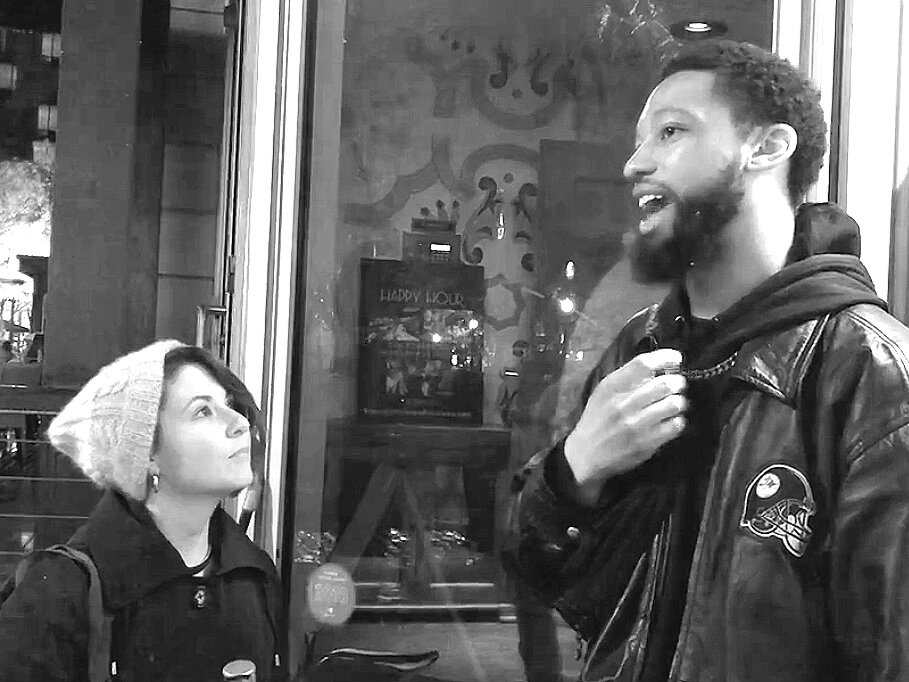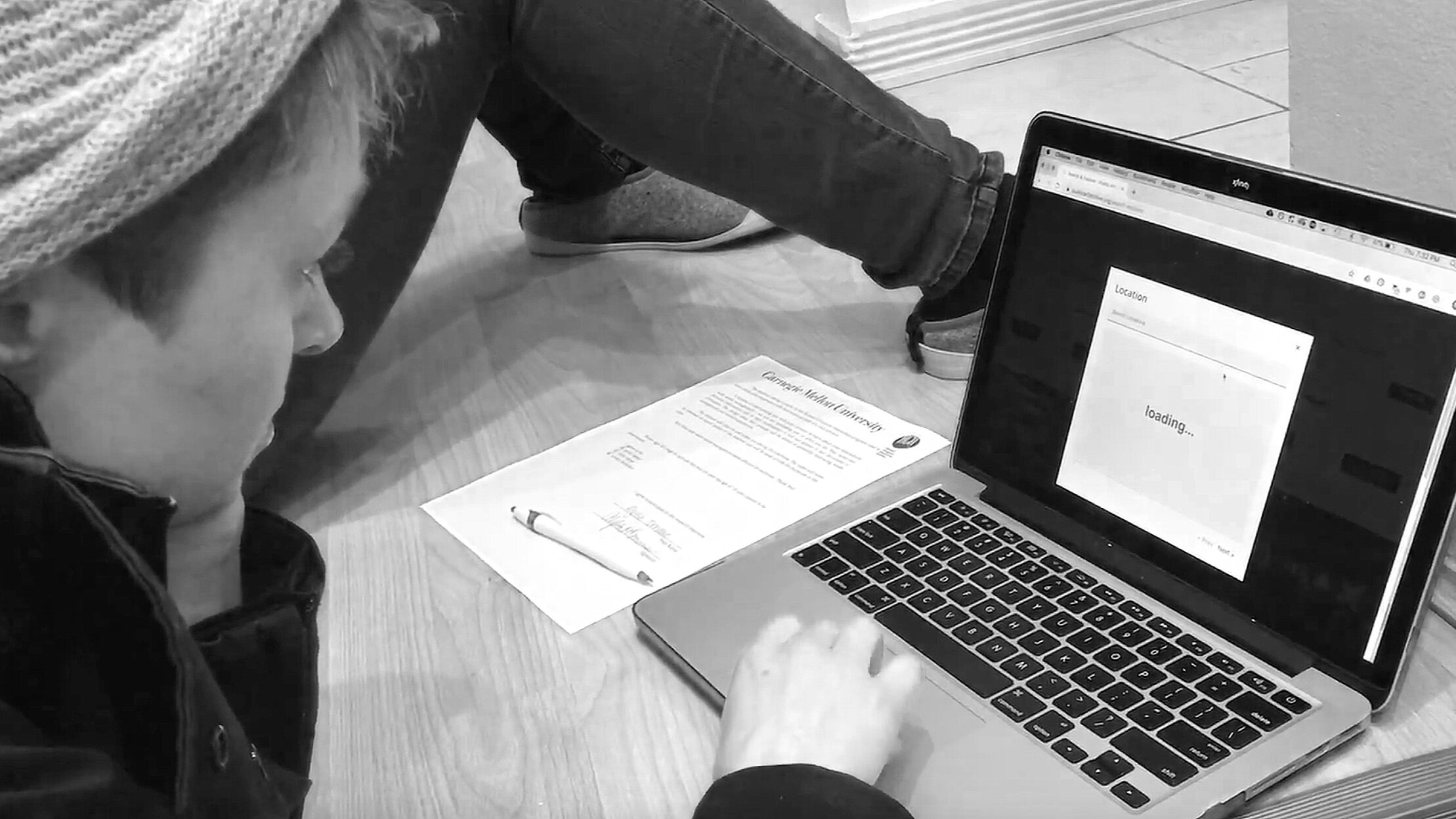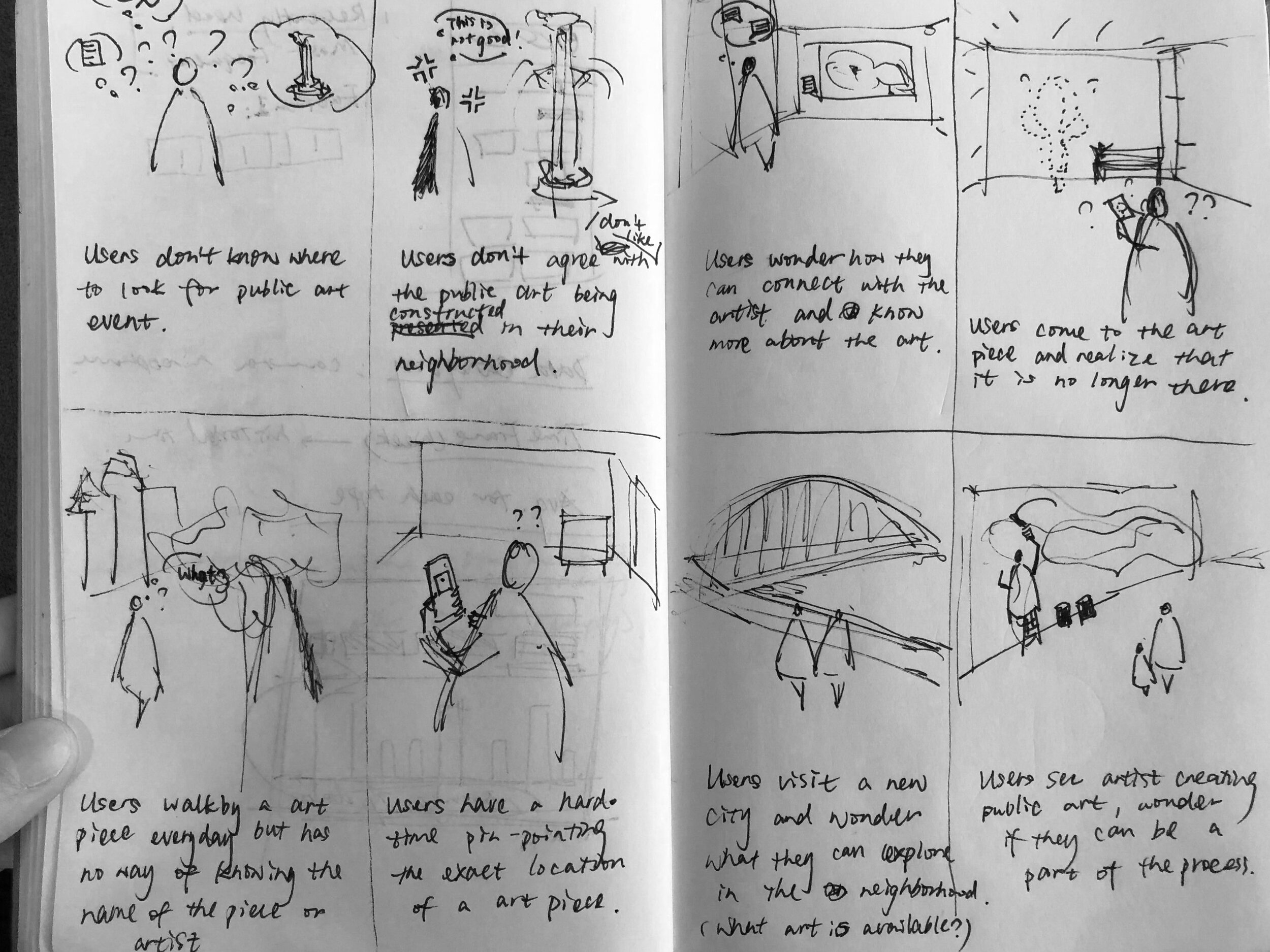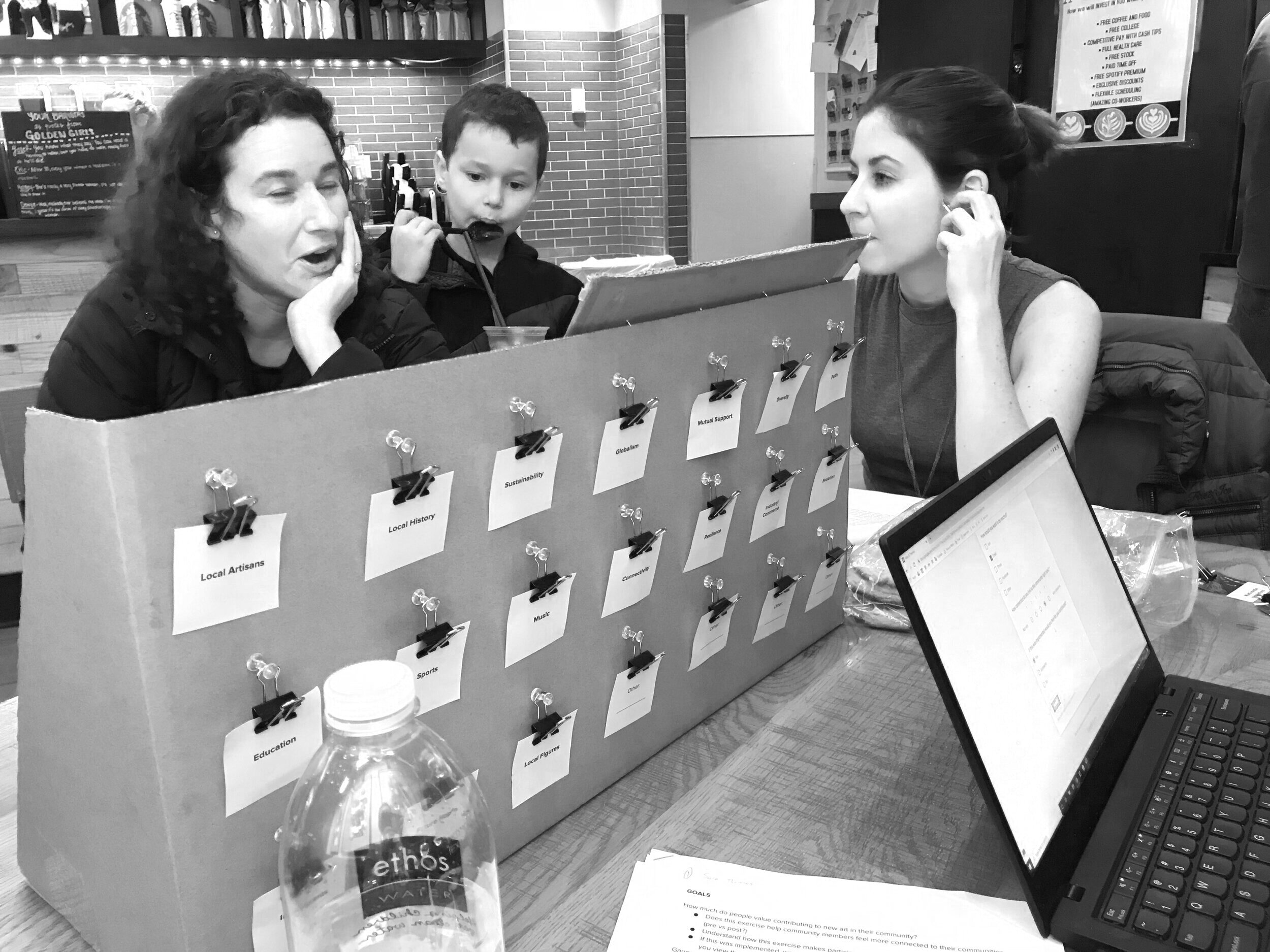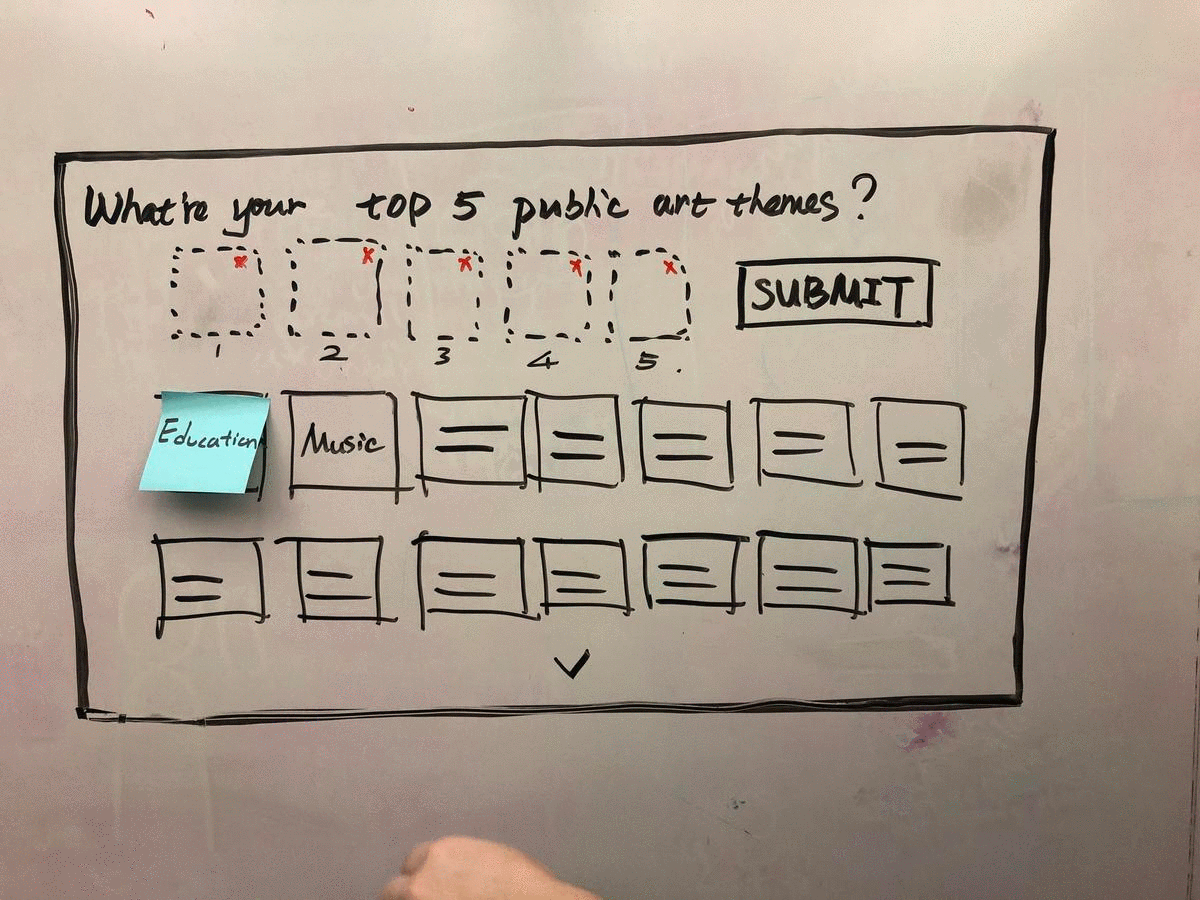Researching ways to increase the relevancy of public art to the local communities in Pittsburgh.
Introducing pARTicipate
An interactive survey for the local community, to help artists and city officials create relevant art for communities.
My role in pARTicipate:
UX researcher
Visual designer
Meeting Facilitator
Tools:
Figma, Photoshop
Methods:
Observe and intercept interviews, Affinity diagramming, Walk the wall, Think aloud protocol, A/B testing, Storyboarding, Speed dating, Experience prototyping
Project Overview
“Everyone has a voice, but not everyone has an audience.”
LiveInTheCity during observe and intercept interview
Team Goal:
How might we help artists, and those in charge of creating public art, gain insight into communities’ values and interests to help them create art that is relevant to the community?
Problem Space
Picture the last time you walked through Pittsburgh. What do you see? Do you see the city’s identity: its history, values, personalities, and stories? Public art can give physical form to this culture, but Pittsburghers often feel disconnected from the art around them.
Opportunity Space
In our research, we discovered that residents value and take an interest in public art when it is relevant to their concept of the community’s identity. Based on our findings, we developed pARTicipate, a tool to help artists and city officials create relevant art.
User Research
Research methodologies used to investigate Pittsburgh’s experiences with public art:
Click on each picture to learn more about each part of the research process:
Our research found three main problems with public art in Pittsburgh:
Some citizens feel the public art in their community does not reflect their identity.
Public art frequently lacks the attributes that citizens connect with: the intent of the piece, the history of its location, themes of personal relevance, and dialogue around the piece.
The creation process of public art may not take community values into account
“The local art community is the soul of any city or town - it keeps it going, contributes to energy and value creation”
Vender during observe and intercept interview
We generated four main insights from our research
Minor involvement in the art creation process early on might enhance, and continue to create, community connections.
Users value public art when they know its context: the background of the art or artist, or the history of its neighborhood.
Public art downtown does not engage viewers because it is not relevant to them.
When selecting types of art, participants thought about the needs of their entire community.
Solution Space:
Using the insights from our research, we developed an interactive survey to record art themes that citizens think reflects the community, their preferences on art types, and current satisfaction with the art. This information can be provided to artists when they create public art. After participating, community members said they would feel they had tangibly contributed to the creation of public art if this type of solution was implemented.
Mid-fi Prototype:
Citizens rank their preferred public art themes and types of public art. The information is collected and sent to the artist or city officials in charge of Pittsburgh’s public art.
Final Findings and Insights:
This is a tool that artists, city agencies, or nonprofits could use to understand community values, interests, and needs before creating public art
Public art downtown does not engage viewers because it is not relevant to them.
Even minor involvement in the process early on could create more involvement later on
Even minor involvement in the process early on could create more emotional connection to the piece later on
Citizens value public art when they know its context: the background of the art or artist, or the history of its neighborhood.
“This changed my perspective on what public art is” - there is an opportunity to create more community ownership and awareness of art in citizen’s communities
When selecting types of art, participants thought about the needs of their entire community, not just their own interests.
Next Steps:
The data that the team has collected, along with the insights, and suggested solution, will be sent to the city officials in charge of public art. If project pARTicipate is continued, it will be at the discretion of the city of Pittsburgh and Carnegie Mellon University.
“When art is relevant to citizens, it strengthens communities and increases the livability of a city. That by itself is a justification for the public expenditure on art. Through pARTicipate, we can ensure these funds are spent on art that is valuable to citizens.”
Meet Team pARTicipate
Team Members: Katie Johnstone, Edward Cho, Nat Schade, Marc Dubin, Shan Wang





